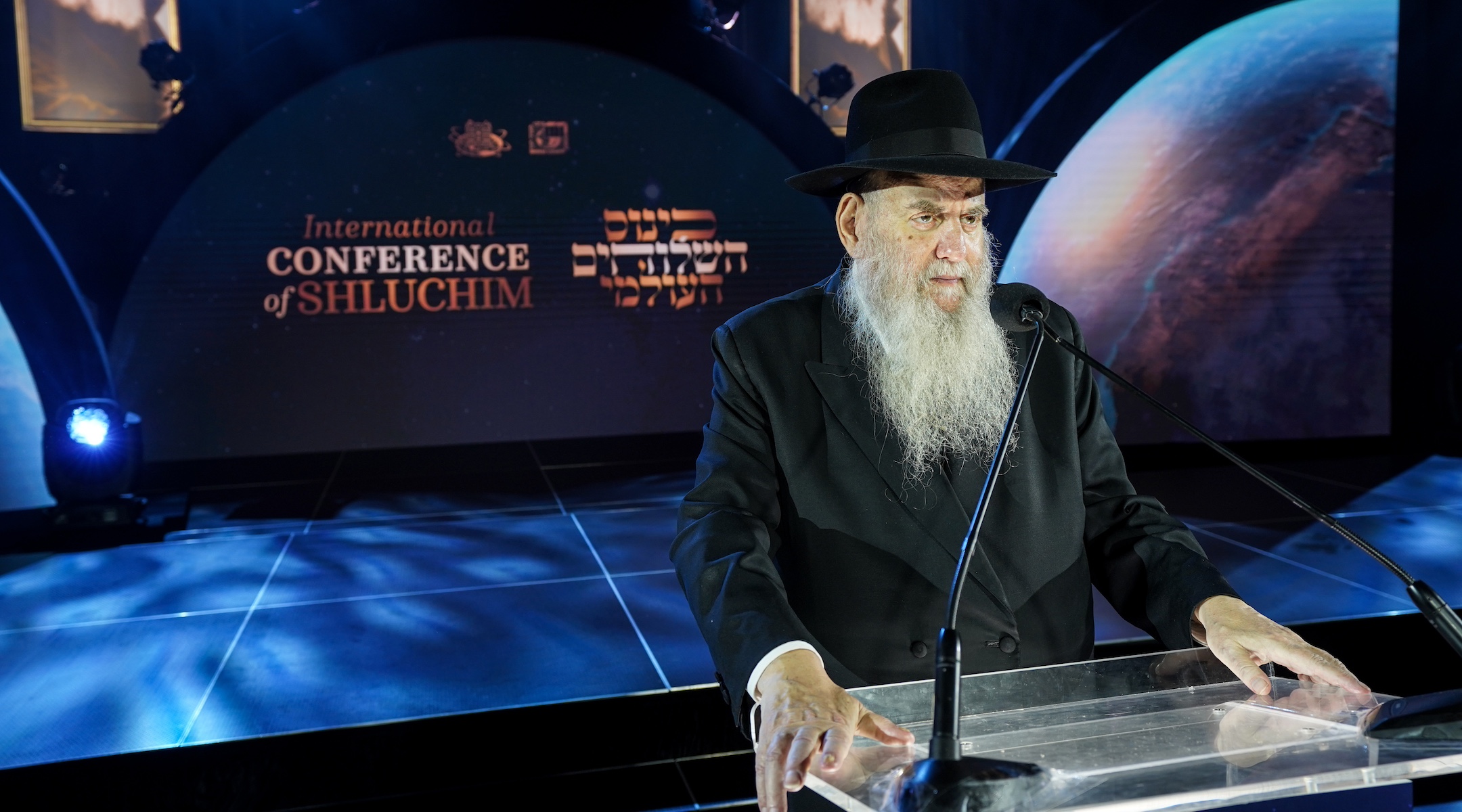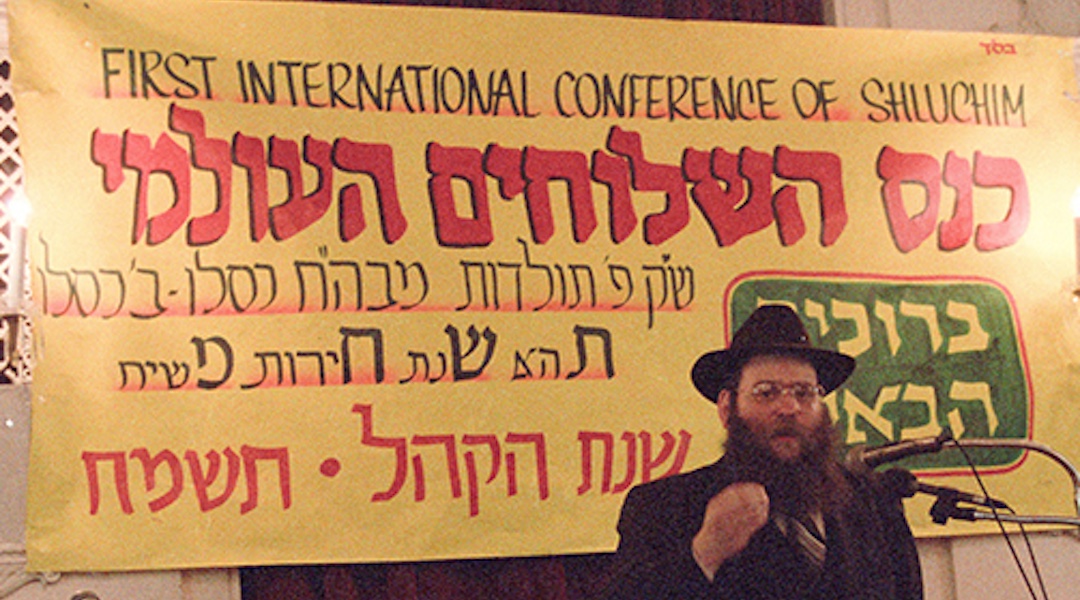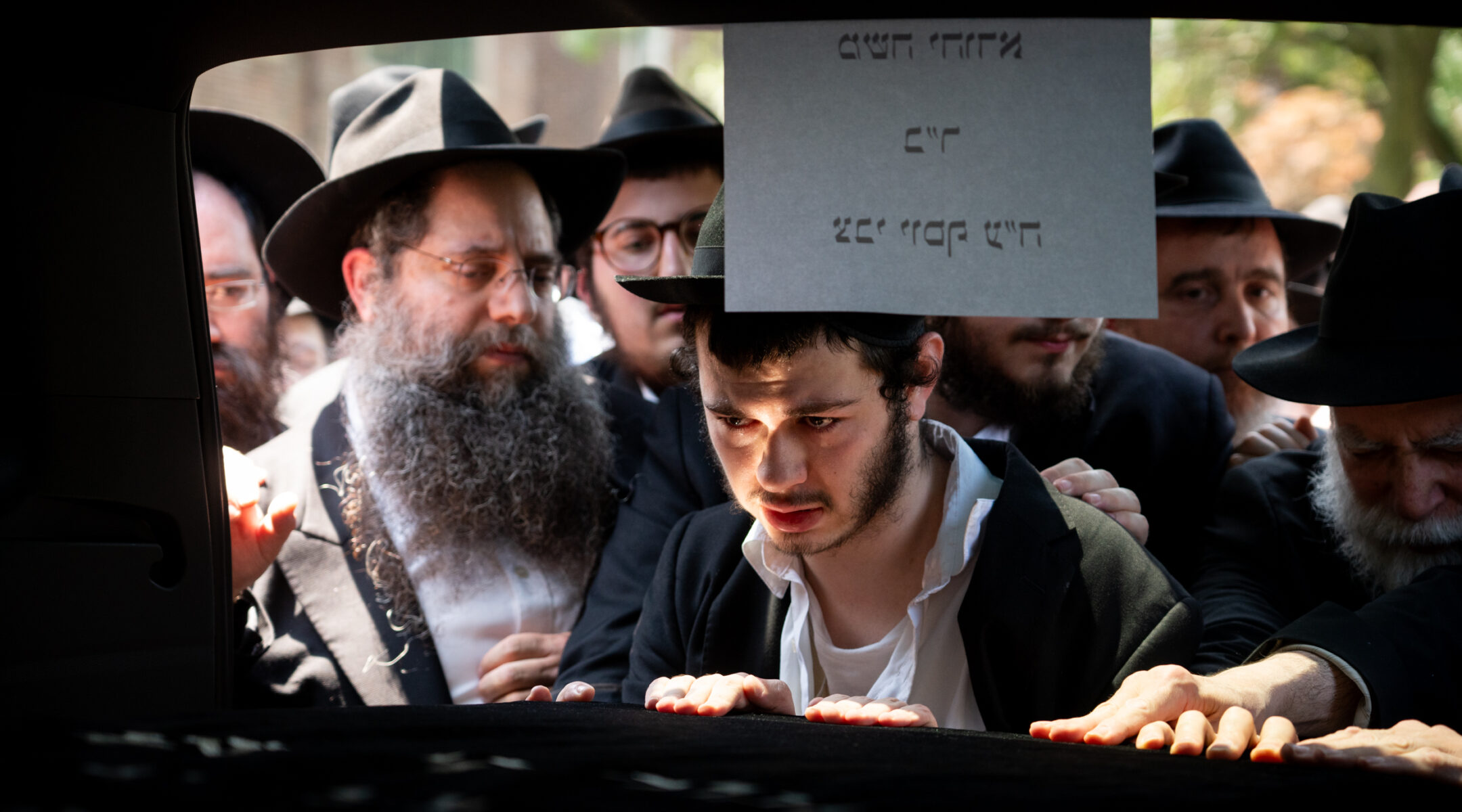When Shmuel Spielman’s brother-in-law and sister-in-law were murdered in the 2008 Mumbai terror attack, he found support from Rabbi Moshe Kotlarsky.
A leading figure in the Chabad-Lubavitch community, Kotlarsky was known for his efforts to build the Hasidic movement’s global outreach and for his personal ties with community members. Rabbi Gabi and Rivky Holtzberg, slain by Islamist terrorists, were typical of the thousands of Hasidic husband-and-wife teams recruited as emissaries to staff far-flung Chabad centers.
“We went with him to India, with the families. He came with us and gave us support and we lit the menorah over there in the Chabad house,” Spielman said. “He was very optimistic, very encouraging, gave us a lot of strength when you need it.”
Spielman, a resident of Crown Heights, was one of thousands mourning Kotlarsky on Wednesday, as the rabbi’s funeral procession passed in front of 770 Eastern Parkway, Chabad’s global headquarters in Brooklyn. Kotlarsky died on Tuesday at the age of 74 after a three-year battle with pancreatic cancer.
As chairman of various Chabad affiliates, Kotlarsky played a key role in carrying out the vision of the movement’s late leader, Rabbi Menachem Mendel Schneerson, known as the Rebbe, in planting what are now 5,000 outreach centers in more than 100 countries. “Chabad houses” function as synagogues and community centers, often in isolated communities, for observant and nonreligious Jews alike.

Rabbi Moshe Kotlarsky, then vice chairman of Merkos L’lnyonei Chinuch, the educational arm of the Chabad-Lubavitch movement, addresses attendees on Zoom during the International Conference of Chabad-Lubavitch Emissaries, in Brooklyn, New York, Nov. 15, 2020. (Bentzi Sasson/Chabad.org)
“Rabbi Kotlarsky was passionate about facilitating the growth of Chabad centers. He worked tirelessly, and with remarkable success towards this objective across so many demographics,” said Rabbi Yehuda Krinsky, a top leader in the movement who serves as chairman of Merkos L’Inyonei Chinuch, Chabad’s educational arm, in a statement. “His lifelong dedication to the Rebbe’s vision has profoundly impacted the vitality of Jewish life around the world.”
Kotlarsky served as the vice chairman of Merkos L’Inyonei Chinuch. As part of that role, he chaired the Rohr Jewish Learning Institute, directed the International Conference of Shluchim, and led Chabad on Campus International, CKids, CTeen Network, and Chabad Young Professionals.
In those roles he enlisted leading philanthropists to the cause, including the family of George Rohr, an American investor, who told Lubavitch.com that Kotlarsky’s death “leaves an enormous, aching void.” Kotlarsky chaired Chabad’s annual emissaries’ conference, a major event that draws thousands to New York each year.
Wednesday’s mourners included Chabad emissaries or, in Hebrew, “shluchim,” who flew in from around the world on a day’s notice to attend. They described Kotlarsky as instrumental in Chabad’s global outreach efforts, but also approachable and deeply connected to people on the ground.
Rabbi Akiva Camissar traveled to the funeral from Amsterdam. He said he had been in regular contact with Kotlarsky while setting up his Chabad house.
“I used to call him, he remembered exactly where we spoke last week,” Camissar said. “He traveled the world in that week, he was all over the world, but he remembered exactly what we were speaking about. He was caring for everybody and that’s why everybody feels so close.”
Rabbi Hershy Drookman, an emissary who flew in from Paris, said Kotlarsky was a “mix of someone who was very, very smart and brilliant and a very good heart, very sensitive.”
“He could meet the president in the morning and give a hello and invite a small child or a young student to eat at the same table with them 10 minutes later,” Drookman said. Among the world leaders Kotlarsky met with over the years were Isaac Herzog, president of Israel; Leonel Fernandez, the former president of the Dominican Republic; and Csaba Kőrösi, former president of the United Nations General Assembly.
Kotlarsky was born in Crown Heights in 1949 to Golda Kotlarsky and Rabbi Hershel Kotlarsky, a Holocaust survivor who helped establish Chabad communities in New York and Montreal. He was educated at yeshivas in Crown Heights and Montreal.

Rabbi Moshe Kotlarsky speaks at an early gathering of Chabad emissaries in Brooklyn in 1987. (Courtesy Jewish Educational Media)
In 1968, Kotlarsky was appointed to work in outreach at Chabad’s educational arm, Merkos L’Inyonei Chinuch, according to a statement from Chabad Headquarters. He started traveling to Jewish communities in areas such as the Soviet Union, East Asia and the Caribbean.
During his travels, he identified communities’ needs, such as Jewish education, ritual baths or kosher food.
Before his passing, Kotlarsky continued his work from his hospital bed, a Chabad spokesperson said. Kotlarsky lived in Crown Heights and is survived by his wife, Rivka, and nine children.
Ahead of the funeral procession Wednesday, signs were stapled to telephone poles around the Brooklyn neighborhood with the details of the funeral in Hebrew under the headline, “Great sorrow in Lubavitch.” Stores on Kingston Ave. taped signs to their windows saying they were closed for the duration of the event.
Thousands gathered in front of 770, a synagogue and the former office of Schneerson, as a black Chevrolet SUV carrying Kotlarsky’s coffin went past. Men streamed past to touch the casket and recite prayers, and women gathered on a sidewalk in the parkway’s median.
Men, women and children wept as the procession went past. A man comforted a young boy on the sidewalk, telling him he did not need to approach the casket if he was too upset. Others gathered on a promenade above the entrance to a synagogue adjacent to 770, reading prayers off of their smartphones or in books.
After passing through Crown Heights, the procession headed to Montefiore Cemetery in Queens, where Schneerson is buried, for Kotlarsky’s funeral service.
Spielman said that, after accompanying the family to Mumbai, Kotlarsky stayed in close contact, and traveled with family members to Israel for a young boy’s first haircut ceremony.
“He treated everyone nicely,” Spielman said. “It didn’t matter who you were, his mission was to spread light.”
The New York Jewish Week brings you the stories behind the headlines, keeping you connected to Jewish life in New York. Help sustain the reporting you trust by donating today.





